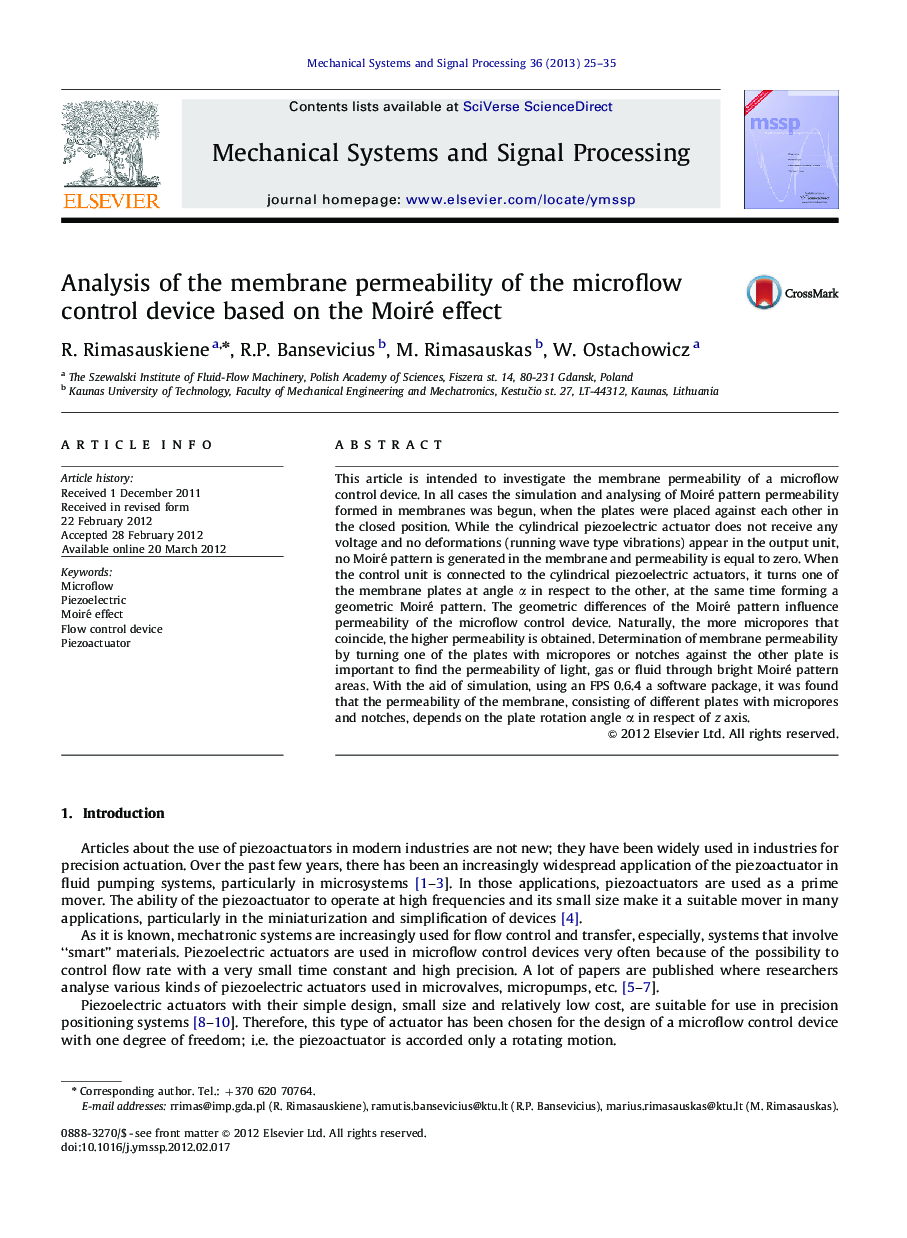| Article ID | Journal | Published Year | Pages | File Type |
|---|---|---|---|---|
| 561287 | Mechanical Systems and Signal Processing | 2013 | 11 Pages |
This article is intended to investigate the membrane permeability of a microflow control device. In all cases the simulation and analysing of Moiré pattern permeability formed in membranes was begun, when the plates were placed against each other in the closed position. While the cylindrical piezoelectric actuator does not receive any voltage and no deformations (running wave type vibrations) appear in the output unit, no Moiré pattern is generated in the membrane and permeability is equal to zero. When the control unit is connected to the cylindrical piezoelectric actuators, it turns one of the membrane plates at angle α in respect to the other, at the same time forming a geometric Moiré pattern. The geometric differences of the Moiré pattern influence permeability of the microflow control device. Naturally, the more micropores that coincide, the higher permeability is obtained. Determination of membrane permeability by turning one of the plates with micropores or notches against the other plate is important to find the permeability of light, gas or fluid through bright Moiré pattern areas. With the aid of simulation, using an FPS 0.6.4 a software package, it was found that the permeability of the membrane, consisting of different plates with micropores and notches, depends on the plate rotation angle α in respect of z axis.
Graphical abstractFigure optionsDownload full-size imageDownload as PowerPoint slideHighlights► Created unique construction of the controlling block of microflow control device. ► Found and analysed dynamic characteristics of the cylindrical piezoelectrical actuator. ► Presented results of the simulations of different membranes permeability. ► Confirmed results obtained during experimental research of the light flow's throughput. ► Unique construction showed that the Moiré effect may be used for the control of flows in different areas.
